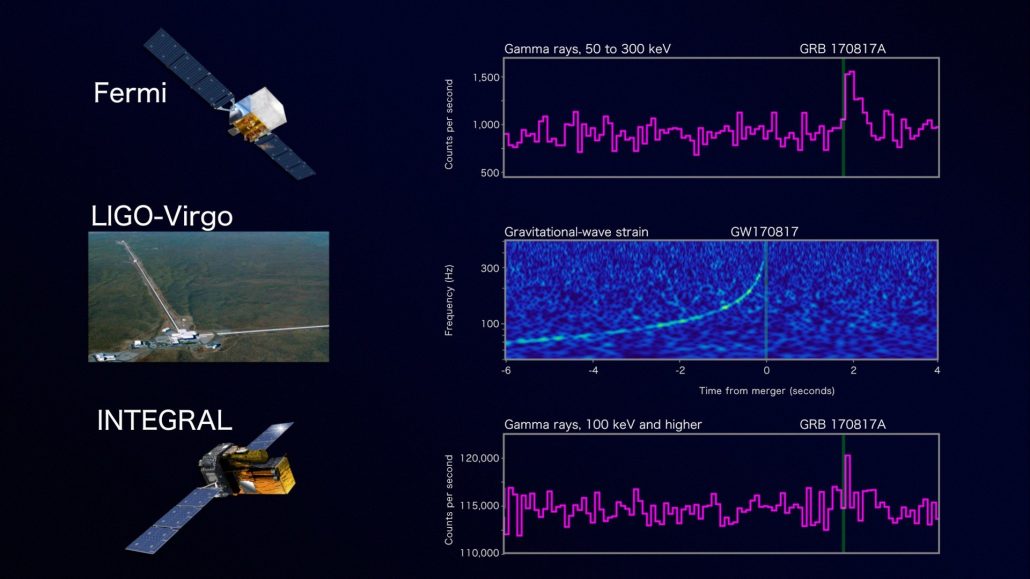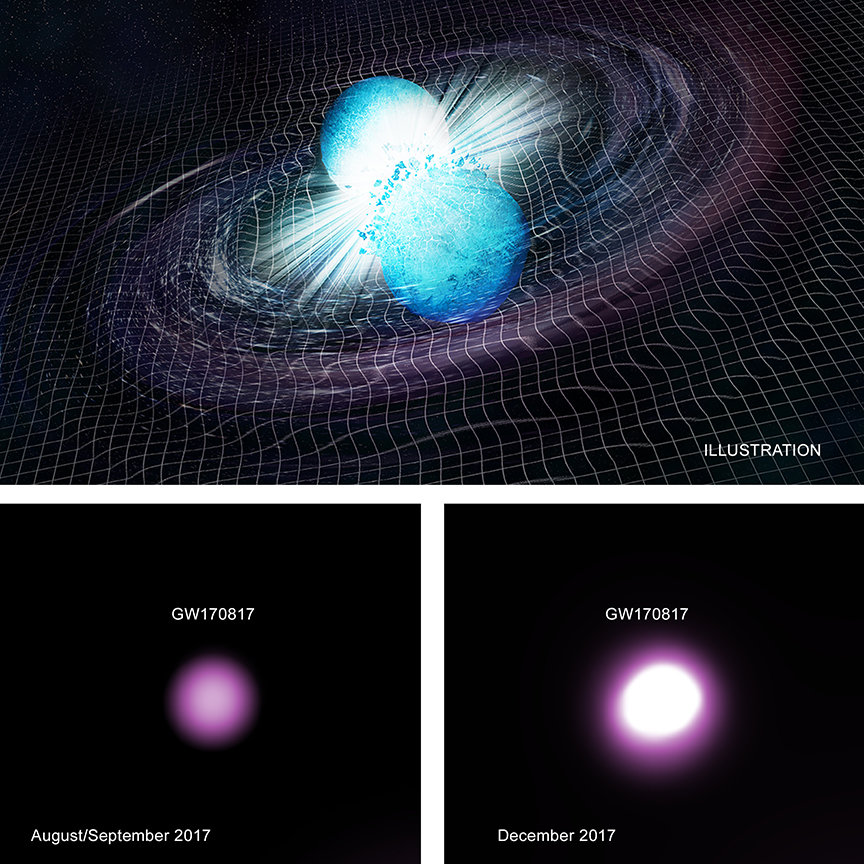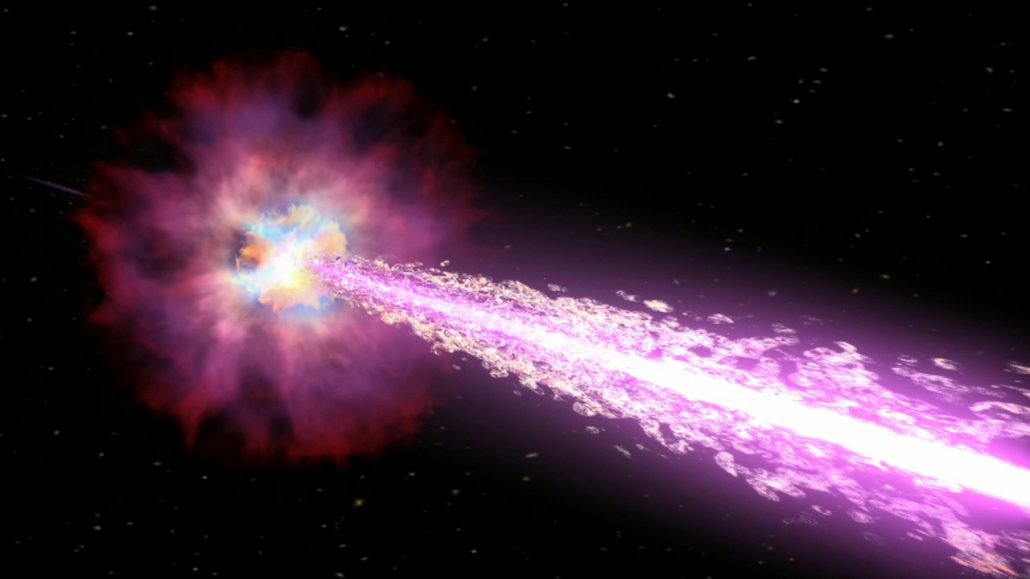August 2017, with the GW170817 event, marked the beginning of the multi-messenger revolution in astrophysics, in which new observations of Gravitational Waves (GW) added up to traditional electromagnetic observations from the very same astrophysical source.
The nearly simultaneous detection of a GW signal from merging Neutron Stars – or merging of a NS with a Black Hole – detected by the Advanced LIGO/Virgo, and of a short Gamma- Ray Burst by Fermi and INTEGRAL satellites, proved that short GRBs are actually due to merging NSs (or NS-BH), as hypothesised since about thirty years.

Credit: NASA’s Goddard Space Flight Center, Caltech/MIT/LIGO Lab and ESA
The quick localisation of the GW-GRB event produced the discovery of a kilonova event, powered by the radioactive decay of r-process nuclei synthesized in the ejecta, providing breakthrough advance in our understanding of the synthesis of rare heavy elements.

The combined Advanced LIGO/Virgo – Fermi/INTEGRAL error-box was of the order of 30 square degrees. The Advanced LIGO/Virgo detection indicated a very close event, ~40 Mpc, greatly limiting the volume, and therefore the number of target galaxies (about 50 galaxies were present in the volume and were subject of optical follow- ups). An optical transient from one of these nearby galaxies was soon discovered. Two were thus the key elements that allowed the discovery and localisation of the optical transient associated to the Gravitational Wave Event: a) the prompt X-ray detection, and b) the very limited volume that had to be searched. For fainter events, further away, such those that will likely be provided by Advanced LIGO/Virgo after the refurbishment between Observation Runs O2 and O3, and by the next generation interferometers during the 2020ties, the volume to be searched will be much larger: the horizon for NS-NS merging events detected with a signal to noise of 8 will reach ~200 Mpc for LIGO and 100-130 Mpc for Virgo in a few years, implying a discovery volume ~100 times larger than in the GW170817 case. In such volumes the number of optical and near infrared transients may be as large as hundreds or even thousands, making difficult the prompt identification of the right one for further follow-up. Fortunately, the number of X-ray transients in the same volume is much more limited (from zero to a few), making much more efficient the search for the electromagnetic counterparts of GWEs in this energy band.
The operation of an efficient X-ray all-sky- monitor with good localisation capability will have a pivotal role in the next decade multi-messenger Astrophysics.
The HERMES full fleet, with its 3 CubeSats funded by EU-H2020 (HERMES-SP), complemented by the 3 CubeSats funded by ASI (HERMES-TP) – will quickly spot newly-born black holes and the electromagnetic counterparts of Gravitational Wave Events.

